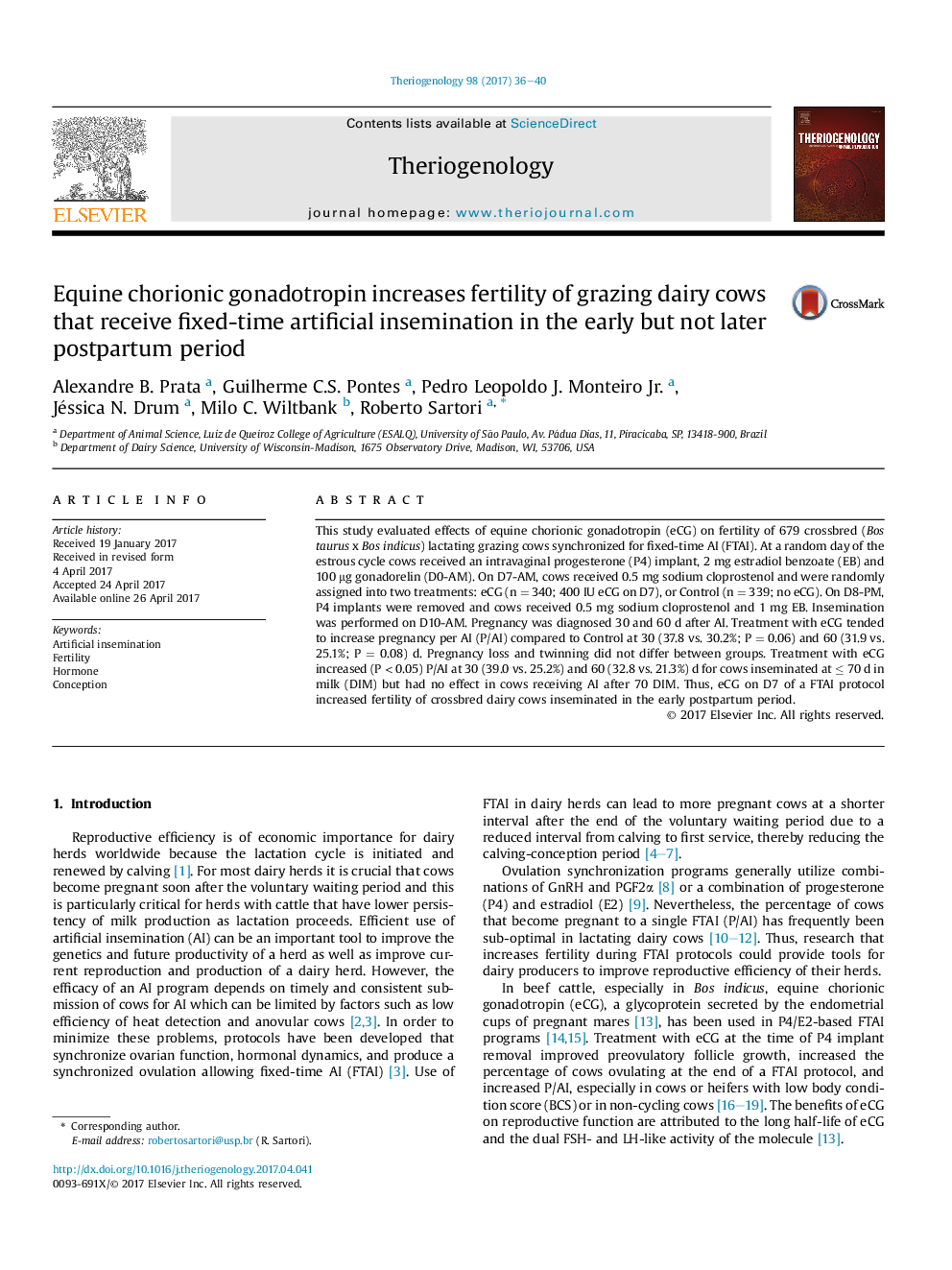| Article ID | Journal | Published Year | Pages | File Type |
|---|---|---|---|---|
| 5523067 | Theriogenology | 2017 | 5 Pages |
â¢The hypothesis that 400 IU eCG in a P4/E2-based FTAI protocol would increase P/AI of crossbred grazing dairy cows was tested.â¢Treatment with eCG on D7 of a FTAI protocol tended to increase fertility due to greater P/AI in cows inseminated at â¤70 DIM.â¢Treatment with eCG on D7 of a FTAI protocol was not effective to improve P/AI in the late postpartum.
This study evaluated effects of equine chorionic gonadotropin (eCG) on fertility of 679 crossbred (Bos taurus x Bos indicus) lactating grazing cows synchronized for fixed-time AI (FTAI). At a random day of the estrous cycle cows received an intravaginal progesterone (P4) implant, 2 mg estradiol benzoate (EB) and 100 μg gonadorelin (D0-AM). On D7-AM, cows received 0.5 mg sodium cloprostenol and were randomly assigned into two treatments: eCG (n = 340; 400 IU eCG on D7), or Control (n = 339; no eCG). On D8-PM, P4 implants were removed and cows received 0.5 mg sodium cloprostenol and 1 mg EB. Insemination was performed on D10-AM. Pregnancy was diagnosed 30 and 60 d after AI. Treatment with eCG tended to increase pregnancy per AI (P/AI) compared to Control at 30 (37.8 vs. 30.2%; P = 0.06) and 60 (31.9 vs. 25.1%; P = 0.08) d. Pregnancy loss and twinning did not differ between groups. Treatment with eCG increased (P < 0.05) P/AI at 30 (39.0 vs. 25.2%) and 60 (32.8 vs. 21.3%) d for cows inseminated at ⤠70 d in milk (DIM) but had no effect in cows receiving AI after 70 DIM. Thus, eCG on D7 of a FTAI protocol increased fertility of crossbred dairy cows inseminated in the early postpartum period.
